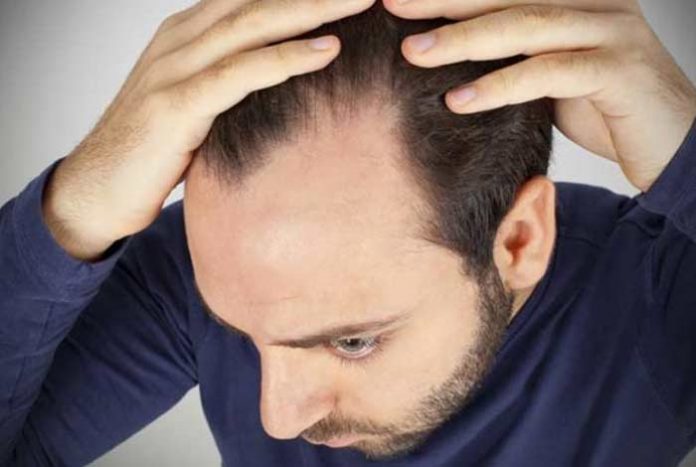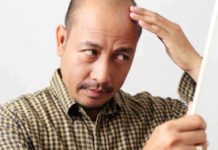
Introduction
Hair is nothing but a bunch of dead cells, in the form of filaments, emerging from the follicles in the skin. However, hair and its distribution has played an extremely important role in evolution, in propagation of genes and really sculpting the modern humans. It is seen as a symbol of beauty and youthfulness in women, and virility and masculinity in men. Since our caveman days, good hair has been viewed as having a strong evolutionary advantage. Men with a thick and good mane are perceived as more fertile and capable of fathering a healthy progeny, in contrast to men with a balding patch. Even today, when we have changed our lifestyle from nomadic to sedentary, our neurological wiring has not changed and unconsciously, women view hair as the marker of good health and good genes for their children. Therefore, people go out of their ways for having perfect hair.
Each day, we lose about 50-100 strands of hair which is normal. It becomes a problem when the lost hair strands are not replaced by new hair, or when the rate of hair fall is higher than the rate of hair regeneration. Since hair plays such an important role in defining our personality, hair loss can be an extremely stressful situation for a person. It can even take a toll on a person’s self-confidence and have a devastating effect on his state of mind. Chronic stress arising out of hair loss can even lead to depression and make people believe that they are losing control over their lives. The situation can take a grave form in people having OCD and body dysmorphic disorder.
Alopecia is the medical term used for defining hair loss. It is of various types depending on the cause of hair loss. One of the commonly observed types of alopecia is male pattern baldness, technically known as androgenetic alopecia. As per a report by the U.S. National Library of Medicine NLM , more than 50% men over the age of 50 years shall experience androgenetic alopecia in some form or the other in their lifetime.
Genetics can be blamed for the receding hairline in males. Also, male sex hormones, called androgens, cause the hair follicles to shrink, thereby producing finer and shorter strands of hair. In the end, growth cycle of each hair stops and there is no growth of new hair.
Male pattern baldness is not a disease and treatment is not always necessary. However, if the person desires, there are medicines available that can help in growing the hair back.
Symptoms
Hair loss observed in men having androgenetic alopecia is observed in a certain pattern. The hair loss usually begins above both the temples and with time, the receding hairline forms a characteristic ‘M’ shape. Then the hair becomes shorter, finer, thinner and eventually forms a U or horse shoe shape around the sides of the head. Hair thinning is also observed at the crown, which often progresses to partial or complete baldness.
Treatment
Treatment for male pattern baldness is not necessary if the person is comfortable with his looks. The hair loss can be safely and economically disguised through hair weaving, hairpieces and changing hair style. However, if a person with androgenetic alopecia is uncomfortable with his appearance, there are medicines available that can help in managing the situation. Some of the medicines belonging to this category are:
1. 5-Alpha Reductase Inhibitors
Dihydrotestosterone (DHT) is a male sex hormone that is produced from testosterone by the action of enzyme 5-alpha reductase. DHT is responsible for producing the biological characteristics in males like body hair, increased muscle mass, deeper voice and normal health of male genitalia. When a male fetus is in the womb, DHT is responsible for the development of the prostate gland and penis.
5-alpha reductase inhibitors are the drugs that block the action of enzyme 5-alpha reductase and do not allow testosterone to convert into dihydrotestosterone. This results in an increase in the level of testosterone and decrease in levels of dihydrotestosterone.
It interferes in hair growth by binding to androgen receptors present on hair follicles and causes the hair follicles to shrink. Thus, affecting the growth of hair and leading to baldness. DTH is required for hair growth but it is believed that it also interferes in hair growth by acting as poison for the growth of hair on the scalp.
The main drawback of this drug is that after the drug is discontinued, hair loss starts again. Therefore, it is only a temporary solution to male pattern baldness. It should also be noted that these drugs should never be prescribed to females.
Available as: Tablet
Generic Name: finasteride
Brand Name: Propecia
U.S. FDA Status: Approved
Availability: Prescription only
Dosage Form: Tablet
Indicated in Pregnancy: No
Alcohol Content: No
Side Effects: Impotence, chills, decreased libido, cold sweats, confusion and dizziness
Generic Name: dutasteride
Brand Name: Avodart
U.S. FDA Status: Approved
Availability: Prescription only
Dosage Form: Tablet
Indicated in Pregnancy: No
Alcohol Content: No
Side Effects: Abnormal ejaculation, irregular heartbeat, erectile dysfunction, chest pain, decreased libido, and breathing
2. Androgen independent hair growth stimulator
Minoxidil, a drug that dilates blood vessels, is also known to be effective in treating alopecia. It works well on both males and females. Minoxidil causes the blood vessels to dilate which increases the blood flow to the scalp, thereby aiding hair growth. Also, by using this drug, the active phase and the size of hair follicle also increases, which further promotes hair growth.
Hair loss can occur after the medicine is discontinued and therefore, this is only a temporary solution. It is available in the concentration of 2% and 5%, out of which 5% concentration is more potent.
Available as: Topical solution
Generic Name: minoxidil
Brand Names: Rogaine (2%), Avacor (5%), Good Sense (5%), Rogaine Extra Strength (5%)
US FDA Status: Approved.
Availability: Prescription and OTC
Dosage Form: Topical solution
Indicated in Pregnancy: No, unless benefits outweigh risks
Alcohol Content: Traces
Side Effects: Hives, unwanted facial hair growth, scalp irritation, swelling on face, lips, tongue and throat, change in color or texture of your hair and flushing
OTC Drugs Used
Based on the different regulatory bodies governing in various countries, different drugs are available over-the-counter for treating androgenetic alopecia. They have been summarized in the table below:
|
Name of the Country |
OTC Drug Available |
| Argentina |
Minoxidil |
|
Australia |
Minoxidil |
|
Austria |
Minoxidil |
|
China |
Minoxidil |
|
Croatia |
Minoxidil |
|
Czech Republic |
Minoxidil |
|
Denmark |
Minoxidil |
|
France |
Minoxidil |
|
Germany |
Minoxidil |
|
Greece |
Minoxidil |
|
Hungary |
Minoxidil |
|
India |
Minoxidil |
|
Ireland |
Minoxidil |
|
Italy |
Minoxidil |
|
Mexico |
Minoxidil |
|
Singapore |
Minoxidil |
|
South Korea |
Minoxidil |
|
Spain |
Minoxidil |
|
Switzerland |
Minoxidil |
|
The Netherlands |
Minoxidil |
|
U.K. |
Minoxidil |
|
The U.S.A. |
Minoxidil |





